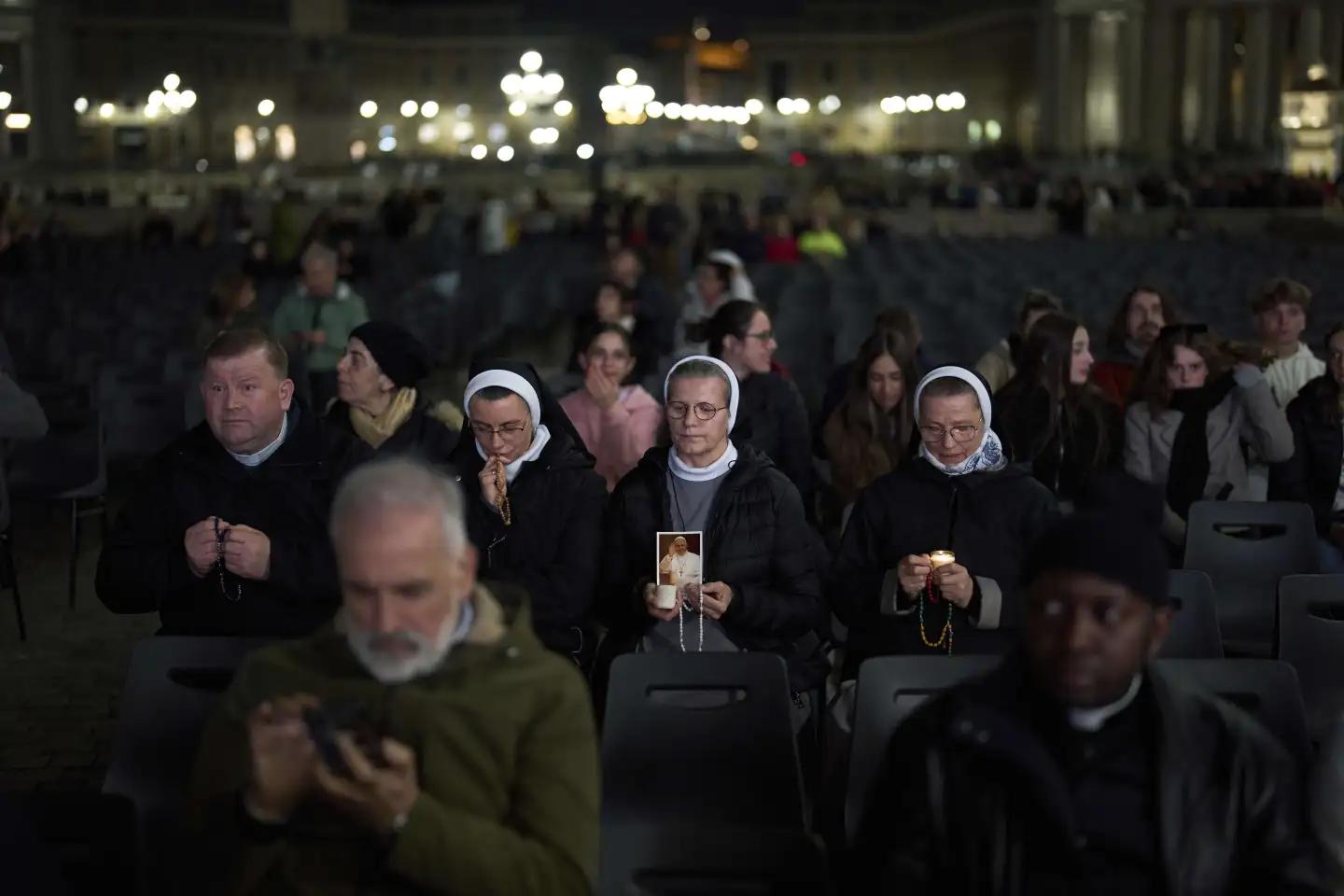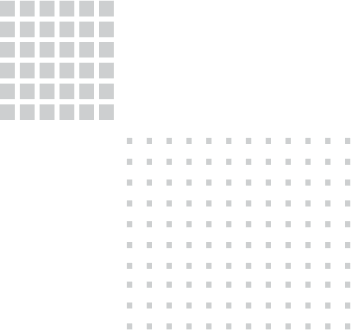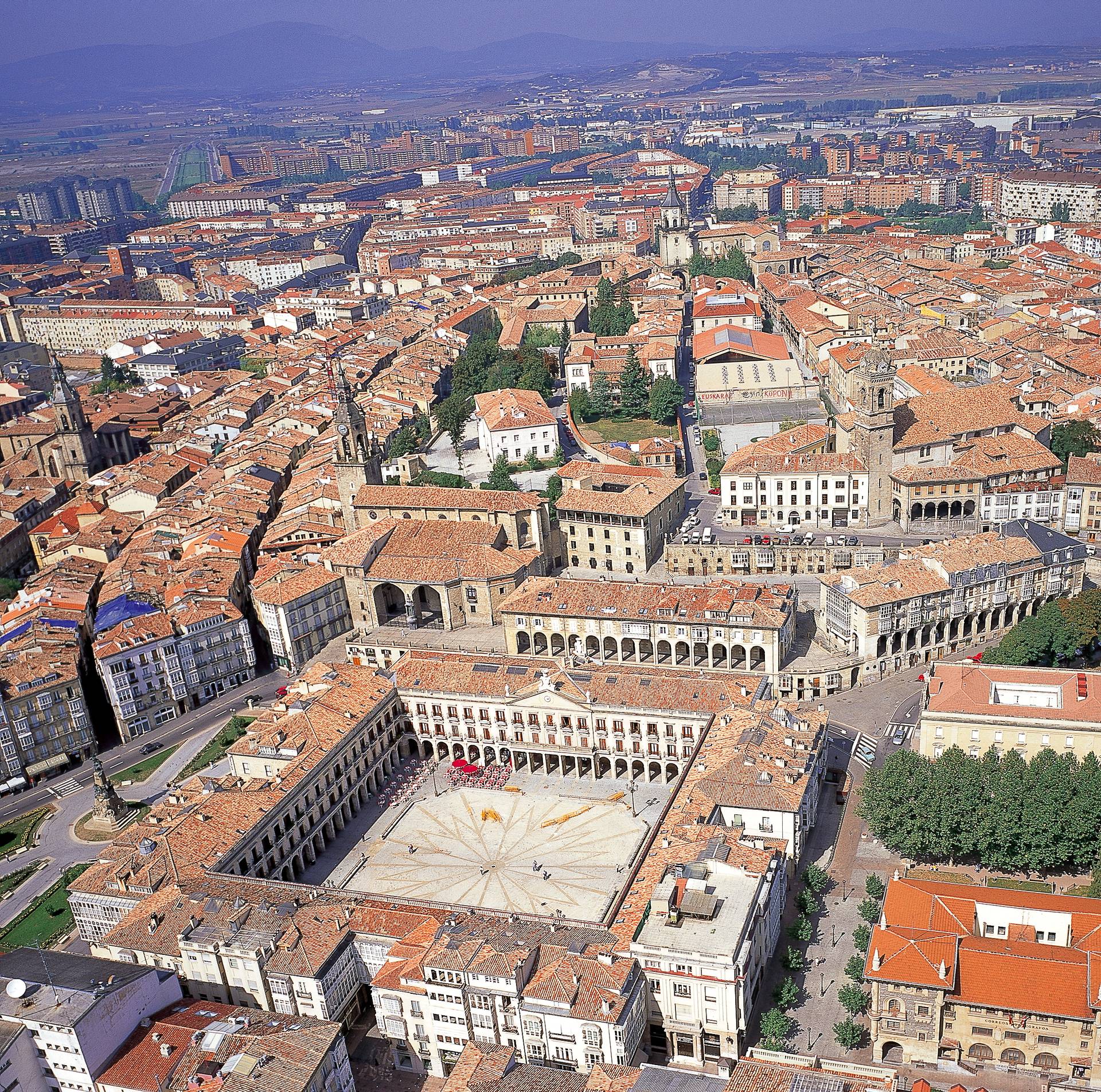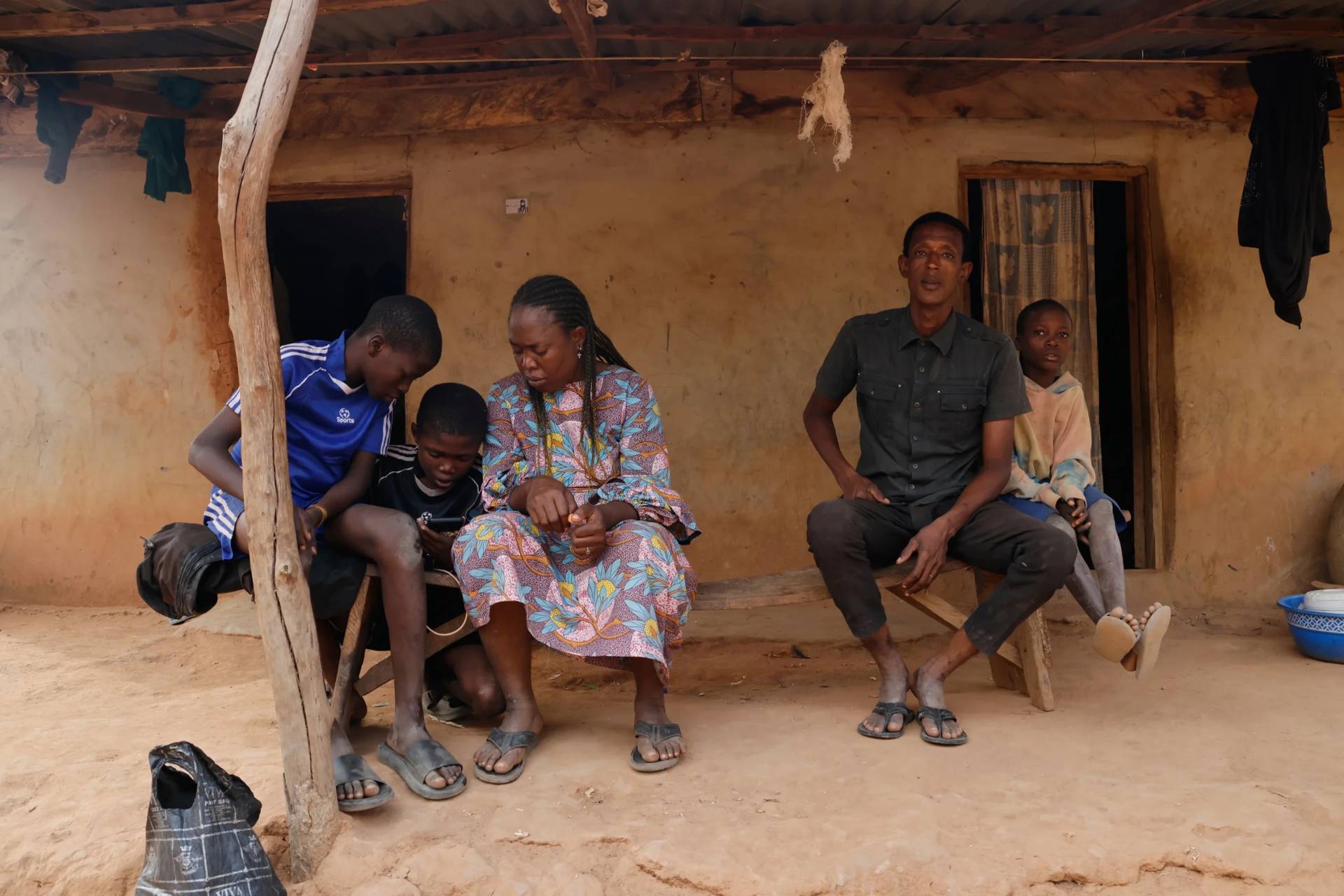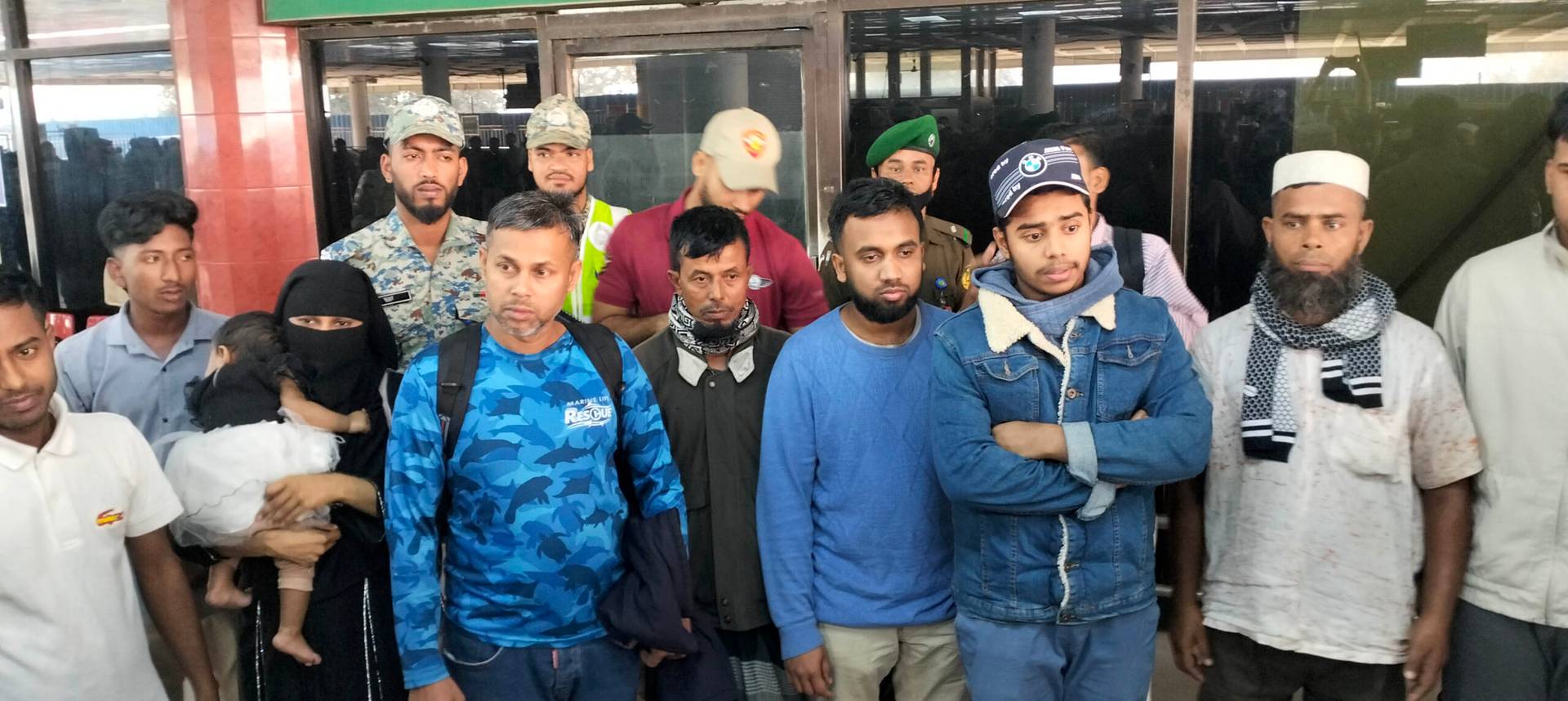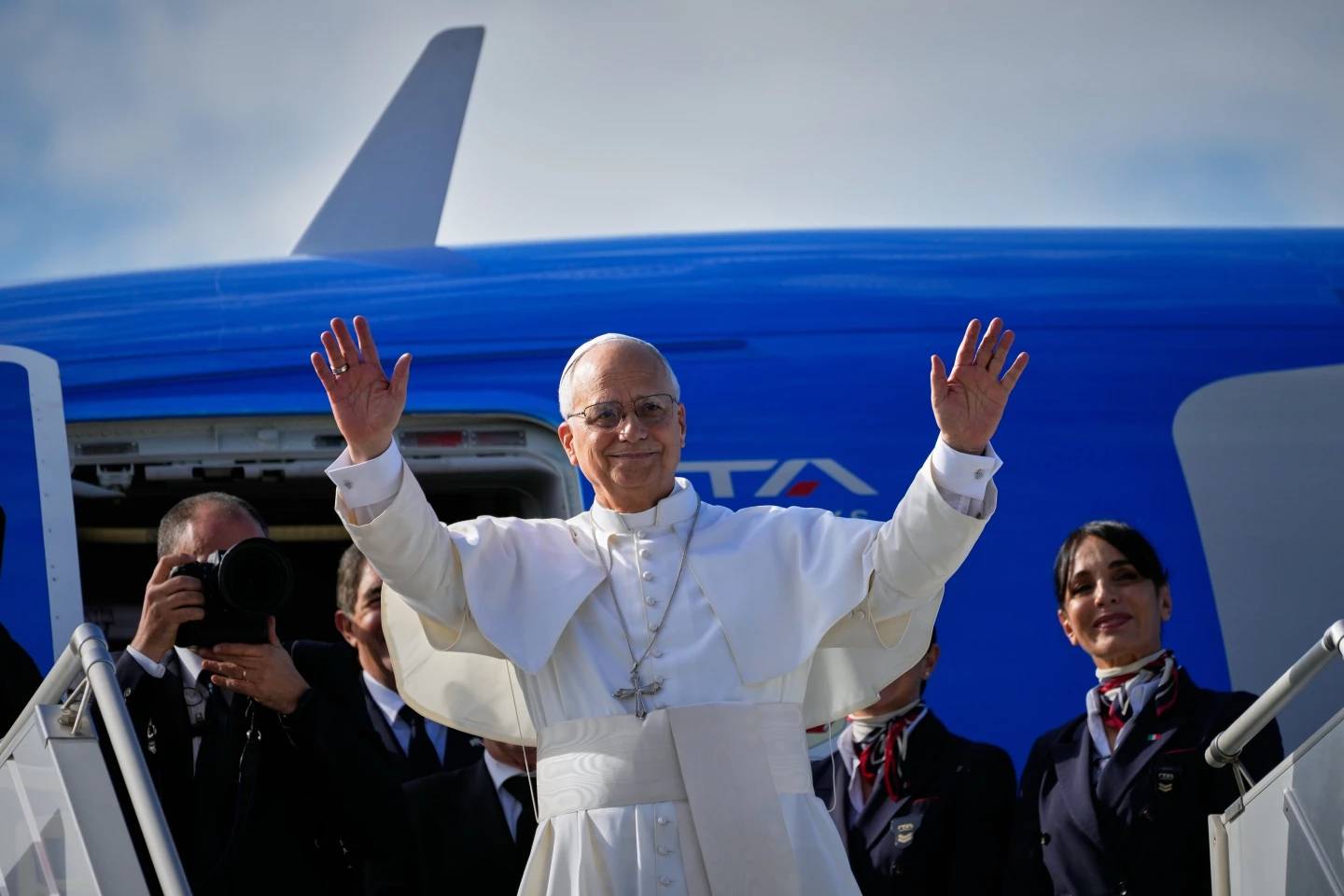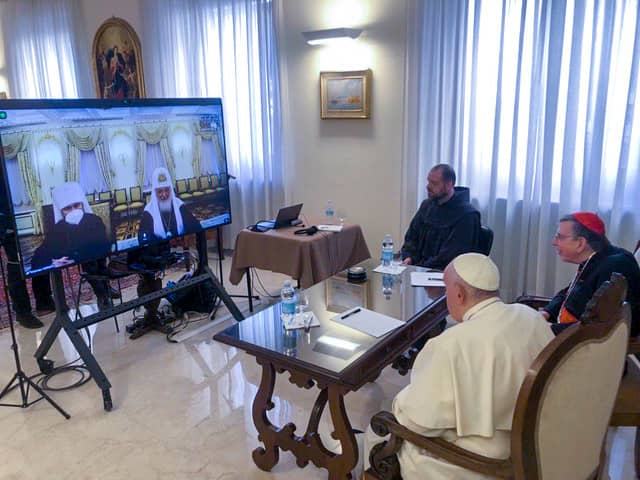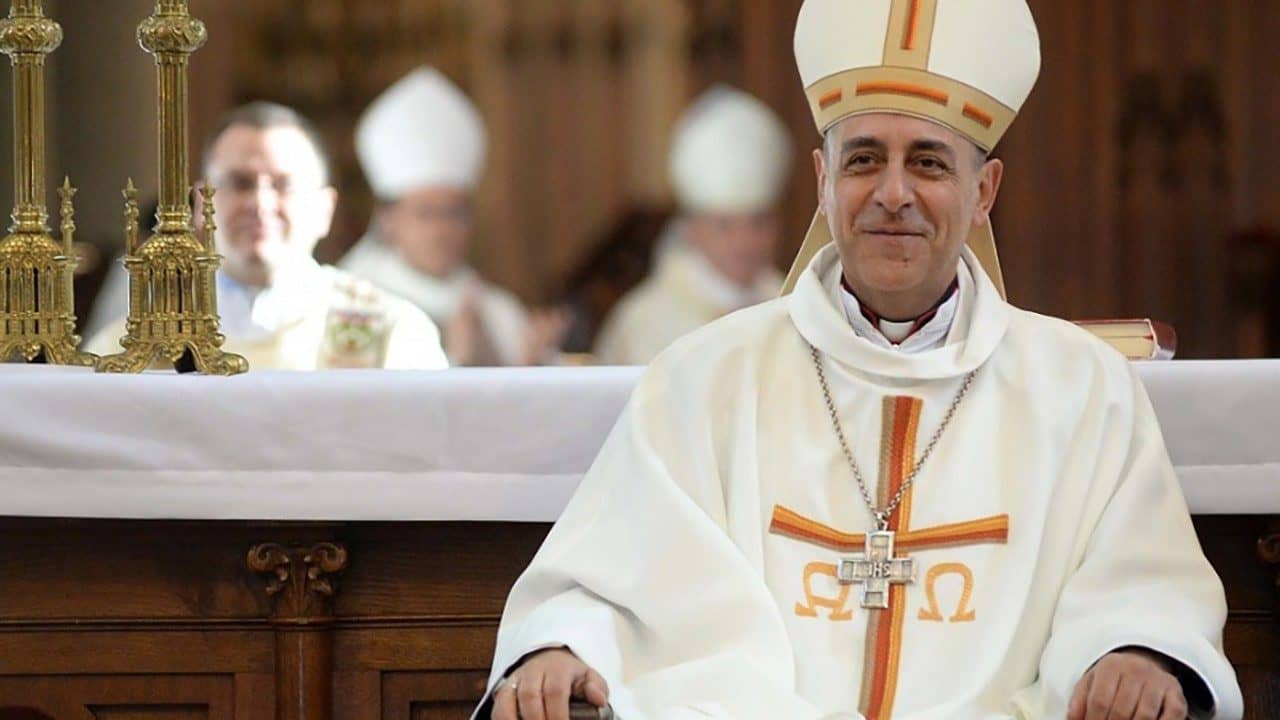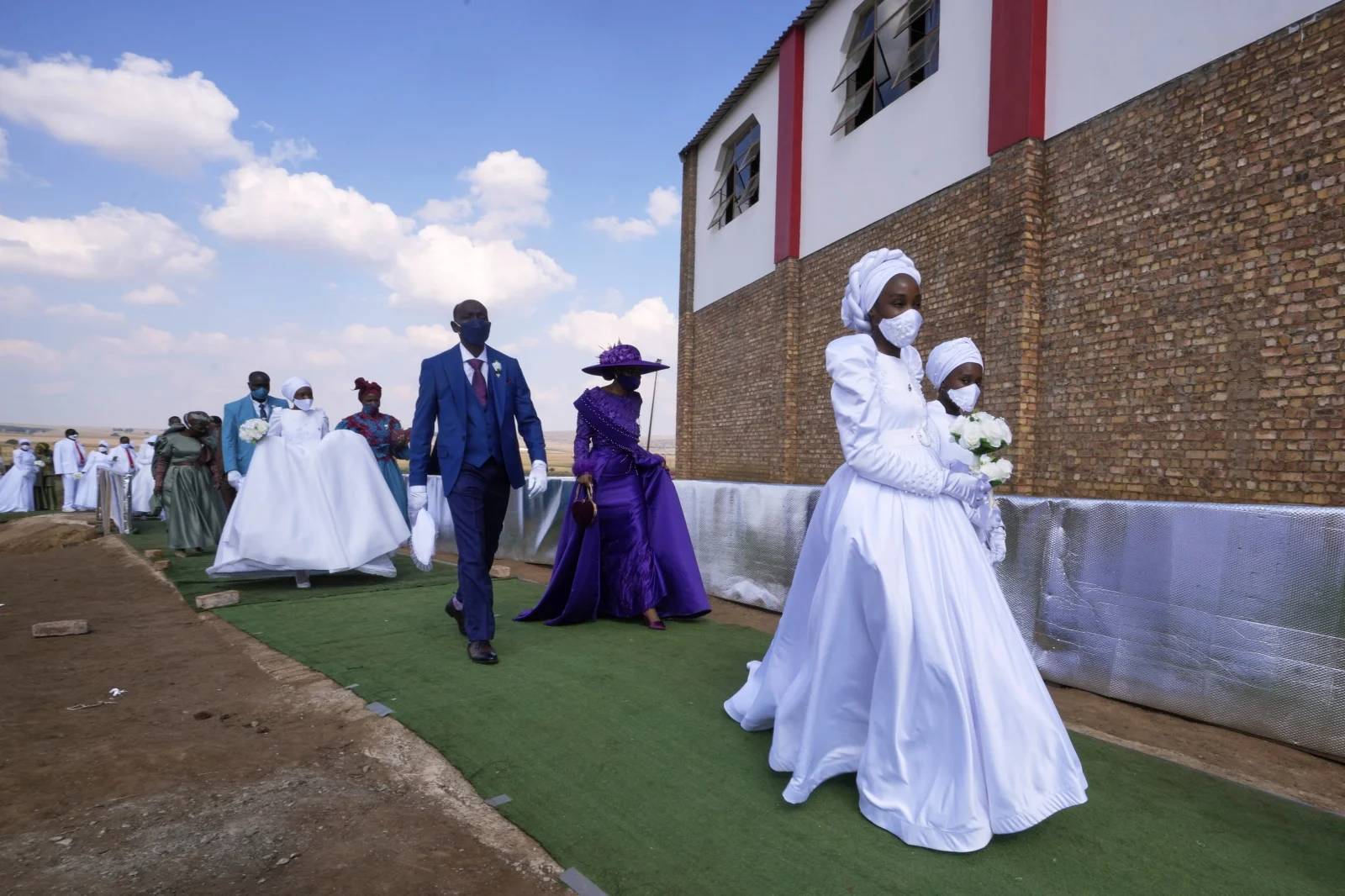ROME – Since his election twelve years ago, Pope Francis has made it no secret that a top priority has been to change the internal culture of what he believes is an overly inward-looking and clericalist Roman Curia set in its ways.
In his various reform efforts, spelled out clearly in his 2022 apostolic constitution Predicate Evangelium restructuring and outlining the role of the Roman Curia, the pope prioritized a diverse composition more reflective of the universal Church, and emphasized the need to have a greater representation of laypeople, specifically women, especially in leadership roles.
However, you wouldn’t know this looking at the image being projected by the curia every day during the nightly rosary they are praying, allegedly on behalf of this reform-minded pope as his hospitalization now stretches beyond the three-week mark.
After Pope Francis suffered his first major respiratory crisis in the hospital on Saturday, Feb. 22, the Vatican announced two days later, on Monday, Feb. 24, that as of that day a nightly rosary would be prayed by cardinals residing in Rome and members of the curia for the pope’s health and recovery.
That first Feb. 24 rosary was led by Vatican Secretary of State Italian Cardinal Pietro Parolin, and the rest have all been led by red-hat wearers who either lead Vatican dicasteries or hold other significant positions.
In order, the officials who have led the rosaries every night since are:
• Italian Cardinal Pietro Parolin, Secretary of State
• Filipino Cardinal Luis Antonio Tagle, pro-prefect of the Dicastery for Evangelization
• Italian Cardinal Giovanni Battista Re, dean of the College of Cardinals
• Italian Cardinal Baldassare Reina, vicar of the Diocese of Rome
• Argentinian Cardinal Víctor Manuel Fernández, prefect of the Dicastery for the Doctrine of the Faith
• Italian Cardinal Claudio Gugerotti, prefect of the Dicastery for Eastern Churches
• Polish Cardinal Konrad Krajewski, papal almoner
• American Cardinal Robert Prevost, prefect of the Dicastery for Bishops
• British Cardinal Arthur Roche, prefect of the Dicastery for Liturgy
• Italian Cardinal Marcello Semeraro, prefect of the Dicastery for Saints’ Causes
• Spanish Cardinal Ángel Fernández Artime, pro-prefect of the Dicastery for Religious
• South Korean Cardinal Lazzaro You Heung-sik, prefect of the Dicastery for Clergy
Saturday’s rosary, which coincides with International Women’s Day, is scheduled to be led by Canadian Cardinal Michael Czerny, prefect of the Dicastery for Integral Human Development.
Notably absent from the list of those leading the nightly rosary are any of the women Pope Francis has named to leadership roles, including the two Italian nuns he has put in charge of Vatican departments.
Those nuns are Sister Simona Brambilla, who last month was appointed prefect of the Dicastery for Religious, and Sister Raffaella Petrini, who as of March 1 serves as president of the Vatican Governorate and of the Pontifical Commission for Vatican City State.
The governorate is considered separate from the curia, but Petrini’s role makes her the most powerful woman in the Vatican, and she technically outranks many of the cardinals who have led the rosary for the pope.
Also missing is the name of Italian layman Paolo Ruffini, who while not ordained is prefect of the Vatican’s Dicastery for Communications.
The absence of Brambilla among those who have led the rosary is especially surprising, given that Artime, her number two official, has led the rosary, meaning he was apparently selected over his own boss.
Who gets selected to lead the nightly rosary is apparently a decision made jointly between the Basilica of St. Peter’s and the Secretariat of State. Some in officialdom have suggested that it is mainly dicastery heads leading, and that the choice of Artime was possibly because Brambilla was unavailable.
That explanation, however, is dubious at best given the perceived importance of the nightly curial rosaries for Pope Francis, which are one of the main events happening at the Vatican these days while he continues to be hospitalized.
Some observers have gotten the impression that the display of so many red hats is essentially an audition for whenever the next conclave happens, boosting the visible profile of the prelates leading the prayers for the pope’s health, while simultaneously undermining his reforms.
Pope Francis often jests about being hated by members of the Roman Curia, and about some waiting for his death, so much so that when someone says they are praying for him, he frequently quips, “for or against?”
He once in an interview famously told the story of an elderly woman that he met in an audience who said she was praying for him and, when he responded with his classic “for or against” question, she replied, “the ones praying against you are in there,” and pointed to the Vatican.
It is no secret that Francis has ruffled more than a few feathers with moves such as salary cuts for cardinals and dicastery prefects and taking control of the Vatican’s investments away from the Secretariat of State following several major mishaps, including the infamous London property deal that saw, for the first time, a cardinal, Angelo Becciu, sentenced in a Vatican tribunal for financial crimes.
His annual speeches to the Roman Curia, which he has used to outline various “diseases” it is afflicted with and showcase the successes of his reforms, have also hit a sour note with many who feel more reprimanded than loved by their shepherd.
His appointment of Brambilla was especially scandalous to canonical rigorists who argue that her appointment was inappropriate because since dicastery heads make binding decisions in the name of the pope, sharing in the exercise of his power, they therefore need to be in Holy Orders, meaning ordained to the priesthood.
In Predicate Evangelium, Pope Francis took a step toward distancing Holy Orders from the governing authority of the Roman Curia, stressing a separation of Holy Orders from governance roles, including leadership of a dicastery.
Artime’s appointment as pro-prefect was intended to ensure that there is no question about the validity of Brambilla’s decisions, now or in a future papacy, while also making it clear who is ultimately in charge.
As the world marks International Women’s Day, the absence of any women up front and center leading prayers for a pope who has gone to such great lengths to promote their inclusion in meaningful leadership roles is startling.
The exclusion so far of any of the women Francis has promoted raises the question as to how seriously his reforms on this issue are being taken, and whether his efforts in this regard will be continued by whoever comes next.
What many observers are currently pondering is whether, should there be a conclave anytime soon, women such as Brambilla, Petrini and others will continue to be promoted and taken seriously or whether they will be sidelined and eventually disappear altogether as a curia resistant to Francis’s reforms slowly pushes them out of the picture.
The recent Synod of Bishops on Synodality clearly demonstrated that beyond isolated issues such as ordination and the diaconate, the role of women in the church, and in meaningful leadership, is one of the most pressing and unresolved issues the modern Church faces.
It is one that an eventual new pope, now or later, will inevitably have to face, and the curia’s actions so far are offering an intriguing potential insight into what sort of climate women in the Vatican can expect in a post-Francis era, whenever that might happen.
Follow Elise Ann Allen on X: @eliseannallen
